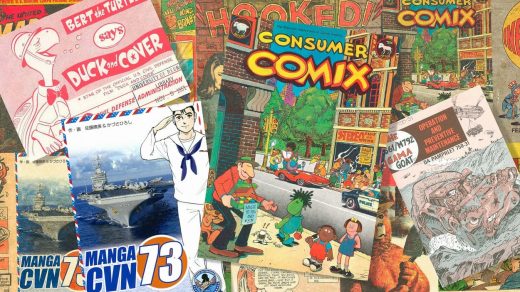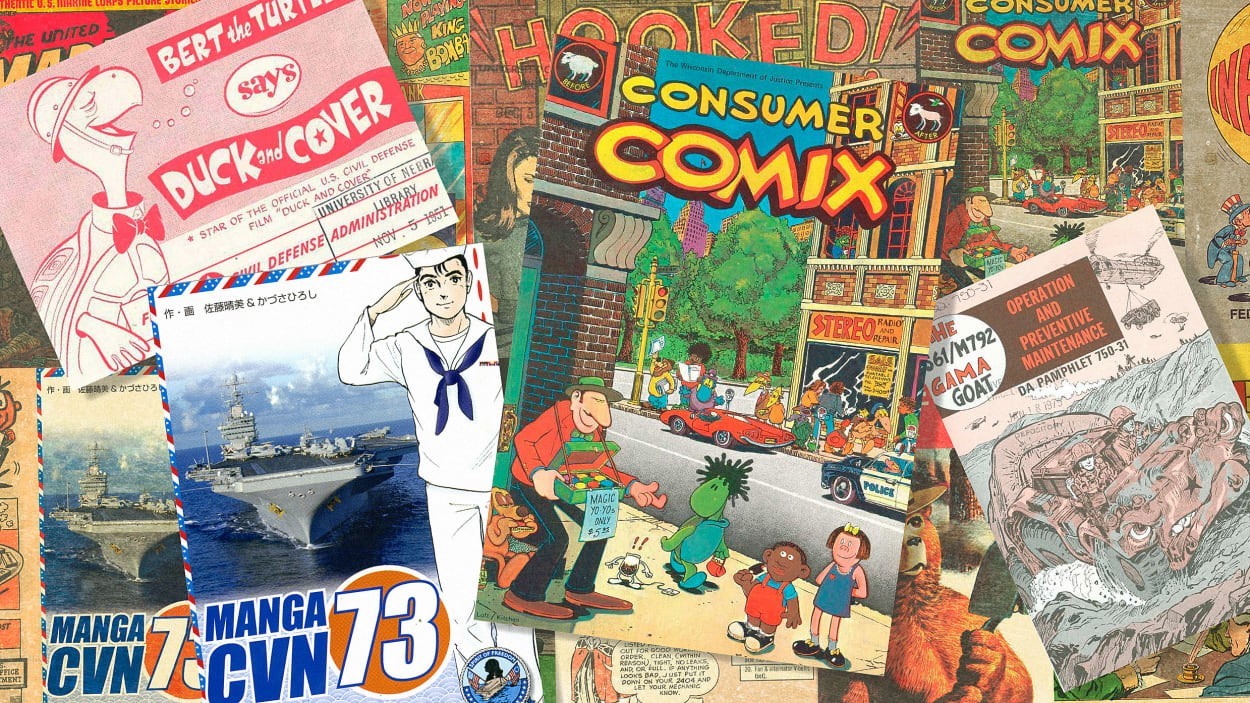The brilliant influence of government comic books
In 1954, the United States Senate held hearings to deal with a raging menace that it feared was fueling a nationwide crisis of juvenile delinquency—the comic book. FBI director J. Edgar Hoover said the popular (and gory) crime and horror comic books of the time “may influence the susceptible boy or girl who already possesses definite antisocial tendencies.” But elsewhere in the U.S. government, taxpayer dollars had been funding the creation of a wide variety of government published comic books.
Government comics have taught Americans how to prevent forest fires, survive a nuclear blast, learn about the dangers of illegal drugs, how to avoid common scams, how inflation works, and how soldiers should handle homosexuality in the military. Comics have been an important media for government communication, including both wartime and domestic propaganda campaigns.
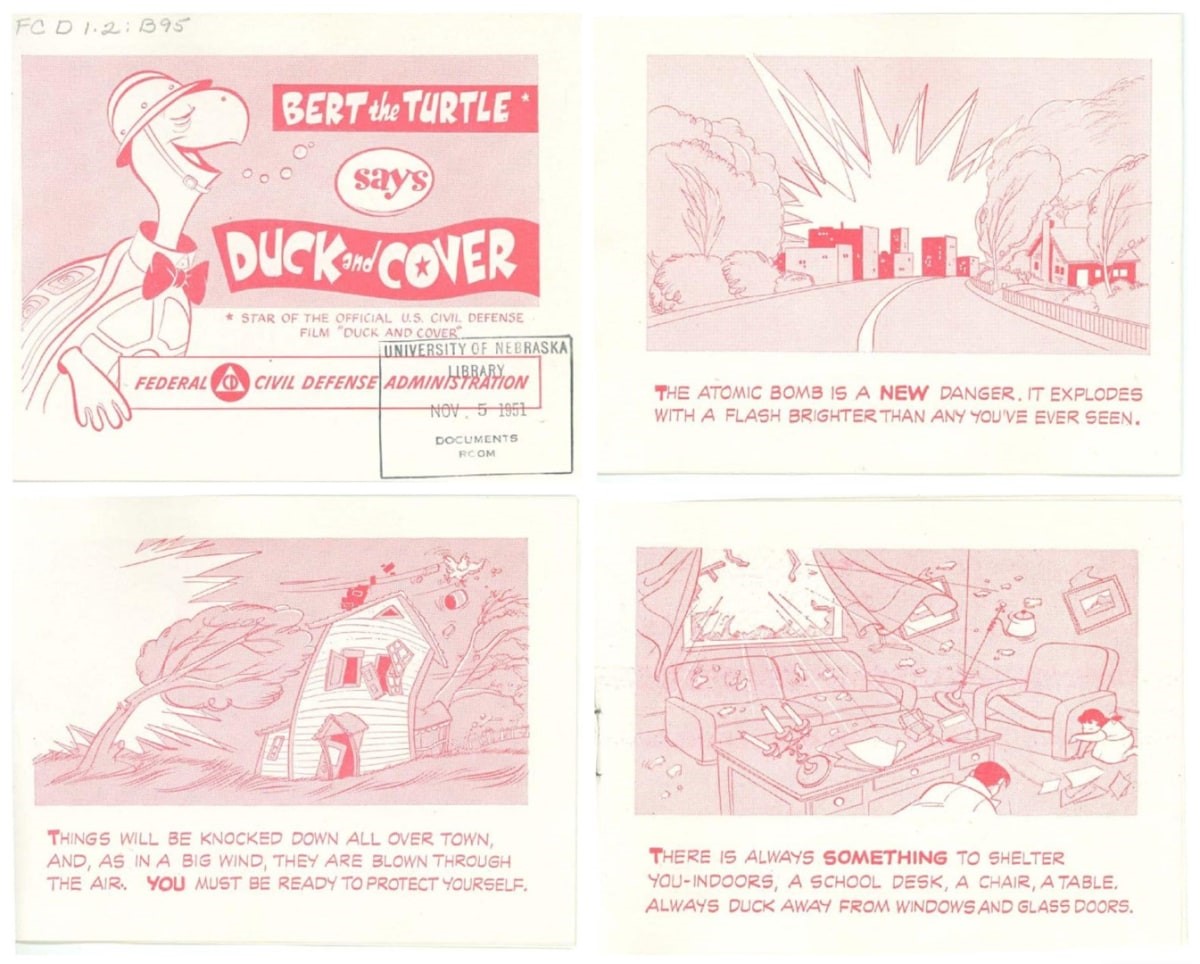
Richard Graham, a professor of libraries at the University of Nebraska, Lincoln has been collecting these unique comics since childhood and he is also the author of a collection of these comics called “Government Issue: Comics for the People 1940s-2000s.”
“I came across this comic book that my dad gave me when I was a little kid in Germany, when he was in the Army. It was a sort of an Army manual called the ‘Gama Goat.’ It was a maintenance manual. It was sort of a way to placate me as a little kid when I was at this Army base in Germany,” said Graham in an interview with Beautiful Public Data.
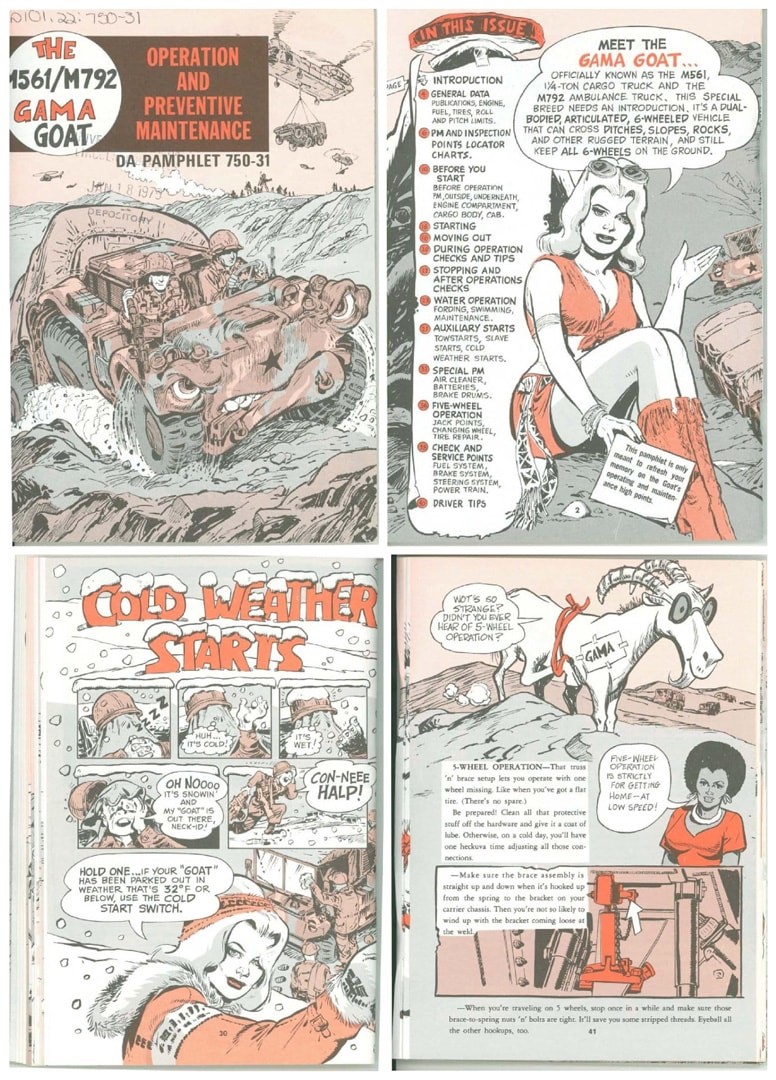
The manual he received as a kid was drawn by comic book legend Will Eisner, who created “The Spirit” and created some of the earliest graphic novels. Eisner’s work creating illustrated service manuals came about during his service in the Army after being drafted in 1942. He created “PS: The Preventive Maintenance Monthly,” which taught soldiers how to care for their M-16 rifles, M-1 tanks, crankshaft pulleys, truck engines, and Howitzers. The magazine was published for 70 years. Eisner’s comics featured a rotating cast of characters such as the Lauren Bacall-inspired Connie Rodd, Master Sergeant Half-Mast, and Connie’s African-American counterpart Bonnie.
Graham recalled his father explaining the Army’s strategy of making comics to train their troops. “There’s a diversity of literacy rates. I mean, you’d have officers who could read because they went to college, and they could read Shakespeare and have a classical education, and then you had draftees and even people who lied about their age to enlist that were 12 or 14 years old and they still had to consume the same information that was literally lifesaving. So the government learned early on that visual communication coupled with an economy of text is a good way to deliver a message,” explained Graham.
In 1930, George Gallup (of polling fame) published seminal research about newspaper readership. Gallup wrote, “More adults read the best comic strip in a newspaper, on an average day, than the front-page banner story.” Realizing that this was a popular way to engage both children and adults, comics became an important part of World War II propaganda. The United States Marines had their own eponymous comic book full of illustrated heroics, photos from the war, and racist cartoons of Japanese soldiers and civilians.
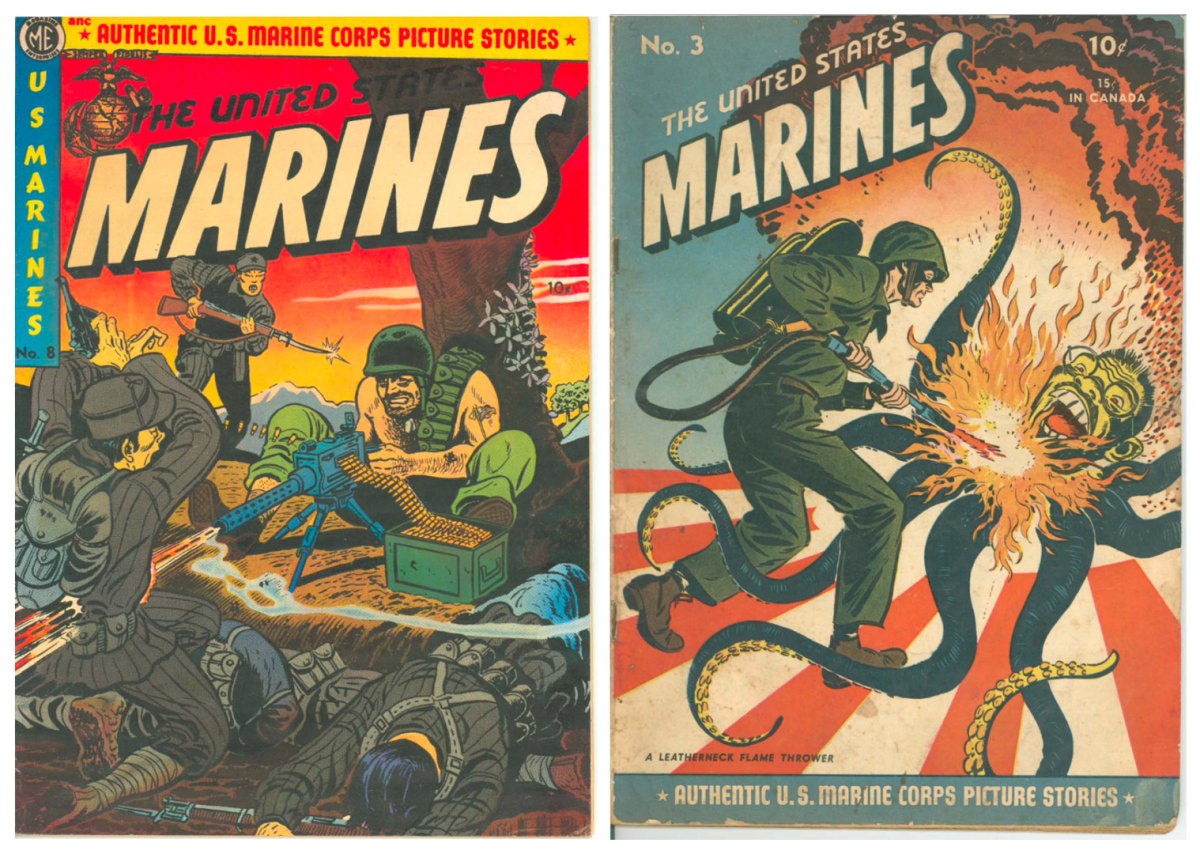
This fascinating collection of comics Graham has curated is a wild assortment of government comic books spanning decades, which reflect some government policies and initiatives that are now cringeworthy.
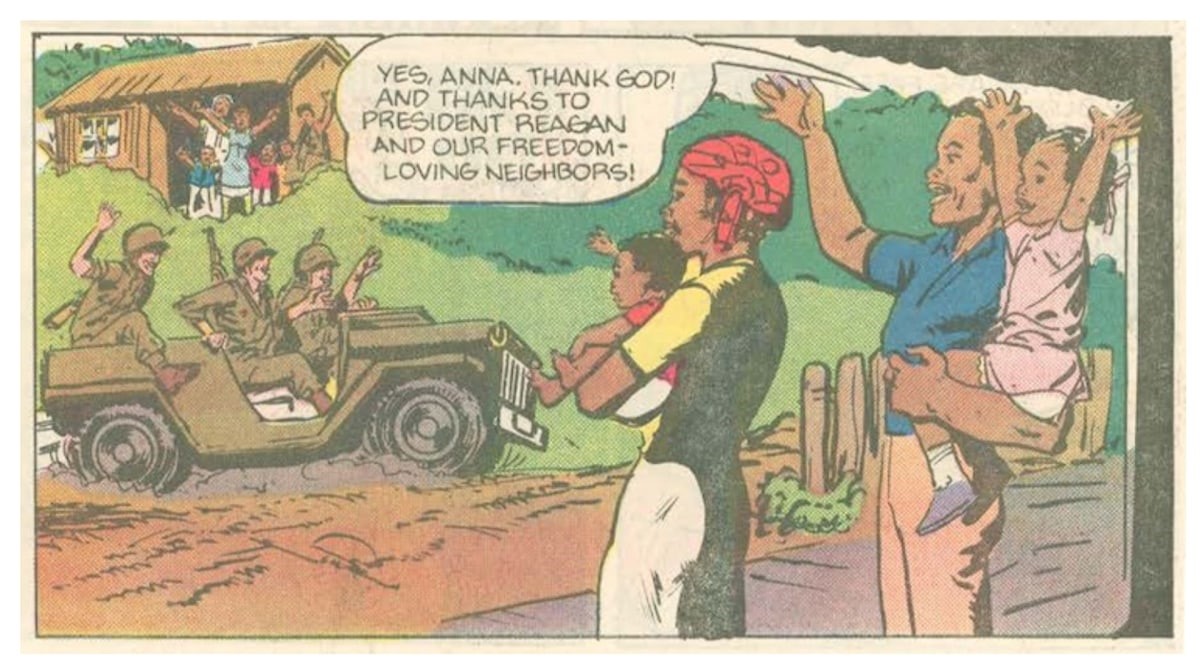
Rescued From Rape and Slavery
In 1984, on the heels of America’s invasion of Grenada, the C.I.A. published an amazing piece of propaganda titled “Grenada: Rescued From Rape and Slavery,” which claimed it was being published by a group called V.O.I.C.E. (Victims of International Communist Emissaries), which did not exist. The panels of the colorful comic shows a scared Grenadian family cheering the arrival of American troops outside their home yelling “THANK GOD! AND THANKS TO PRESIDENT REAGAN AND OUR FREEDOM LOVING NElGHBORS!”
Dignity and Respect
In 2001, the U.S. Army published a comic titled “Dignity and Respect: A Training Guide On Homosexual Conduct Policy” which was meant to help soldiers apply the Clinton administration’s tortuous “Don’t Ask, Don’t Tell” policy. After Graham’s book of government comics was published, he heard from one of the consultants who helped author the comic. “He was a chaplain, attached to a Virginia company. And they were trying to address the suicide rates that were going on. That person was addressing this out of love and care for their fellow soldier and not from, ‘homosexuality is a choice and is a sin’ ”
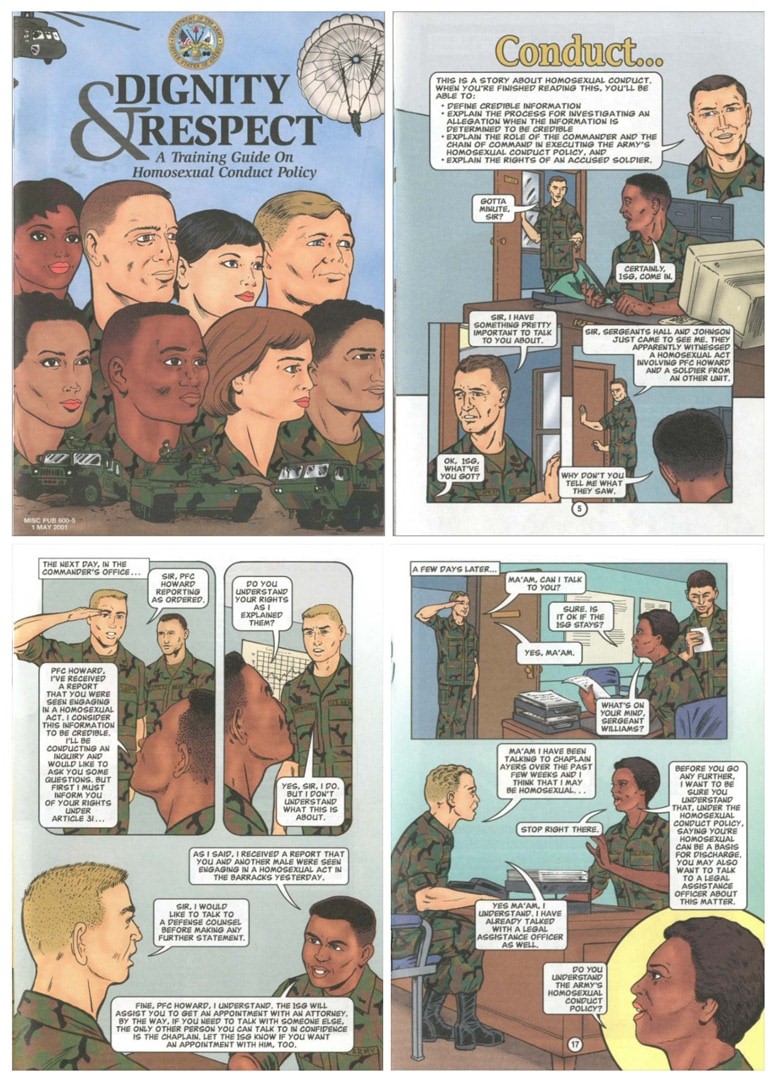
But the military and intelligence community did not have a monopoly on creating these kinds of comics. In the collection you will find the Federal Reserve Bank of New York’s “The Story of Banks,” “Once Upon a Dime,” and “The Story of Inflation.” The U.S. Department of Health published a comic in 1967 about the dangers of drugs titled “HOOKED!”
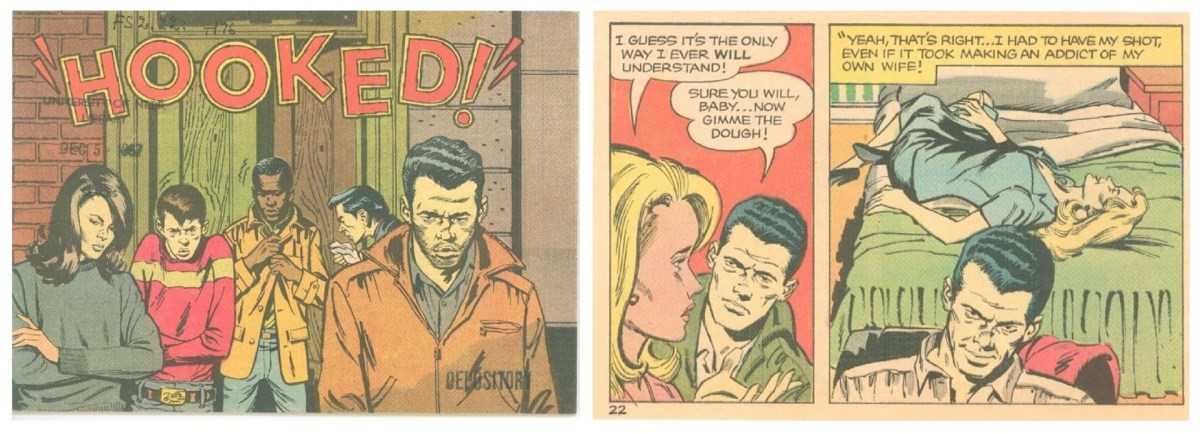
One of the more interesting comics in the collection was released by the Wisconsin Department of Justice: 1975’s “Consumer Comix” was clearly trying to reach a particular young audience, by adopting the look of the counterculture “comix” genre, featuring the work of underground artists Peter Loft and Peter Poplaski who came from the scene. The comic book featured cautionary tales of consumer scams dealing with mail order and car repairs.
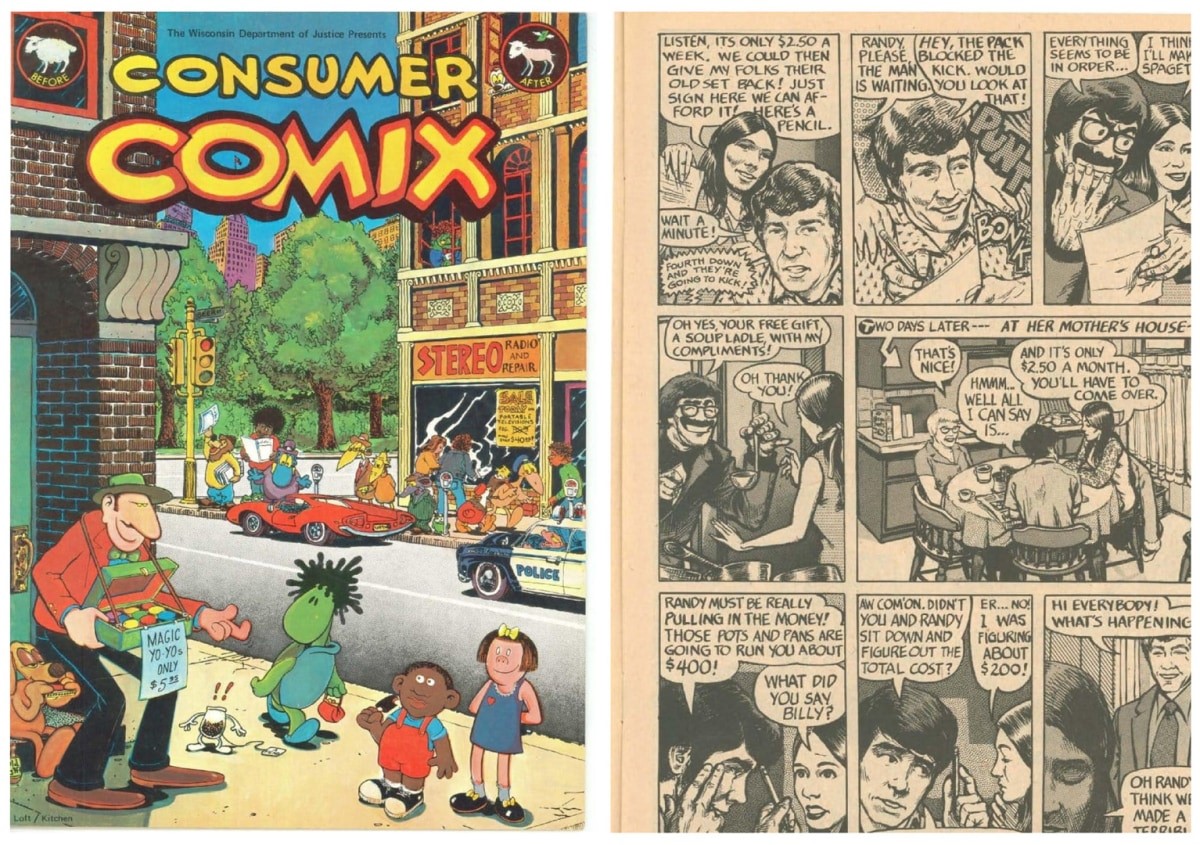
The collection of comics features other famous illustrators such as Neal Adams, Frank Frazetta, Al Capp, Charles Schultz, and Walt Kelly. These artists helped create some memorable characters featured in these comics, such as the U.S. Forest Service’s “Smokey the Bear,” the Postal Service’s “Mr. Zip,” and the Consumer Product Safety Commission’s less famous “Sprocket Man.”
The U.S. government is still making comics, and adapting to new formats to get its message out. In 2005, the U.S. Navy announced that the U.S.S. George Washington was set to be deployed to Yokosuka, Japan, as the first nuclear-powered aircraft carrier permanently stationed outside of the U.S. To help the local Japanese population understand the mission of the carrier, the Navy published its own 205-page, manga-style comic in both Japanese and English, titled “Manga CVN 73 – USS George Washington.”

Graham said that the collection continues to grow as new government comics keep coming out, and he continues to learn about older ones. “A lot of people are dying and these collections are getting thrown away and getting donated, and some of them are really valuable.”
Republished with permission from Beautiful Public Data, a newsletter by Jon Keegan that curates visually interesting data sets collected by local, state, and federal government agencies.
To see more of the tools used to explore this data, read more at Beautiful Public Data. You can subscribe to the newsletter here.
(18)

